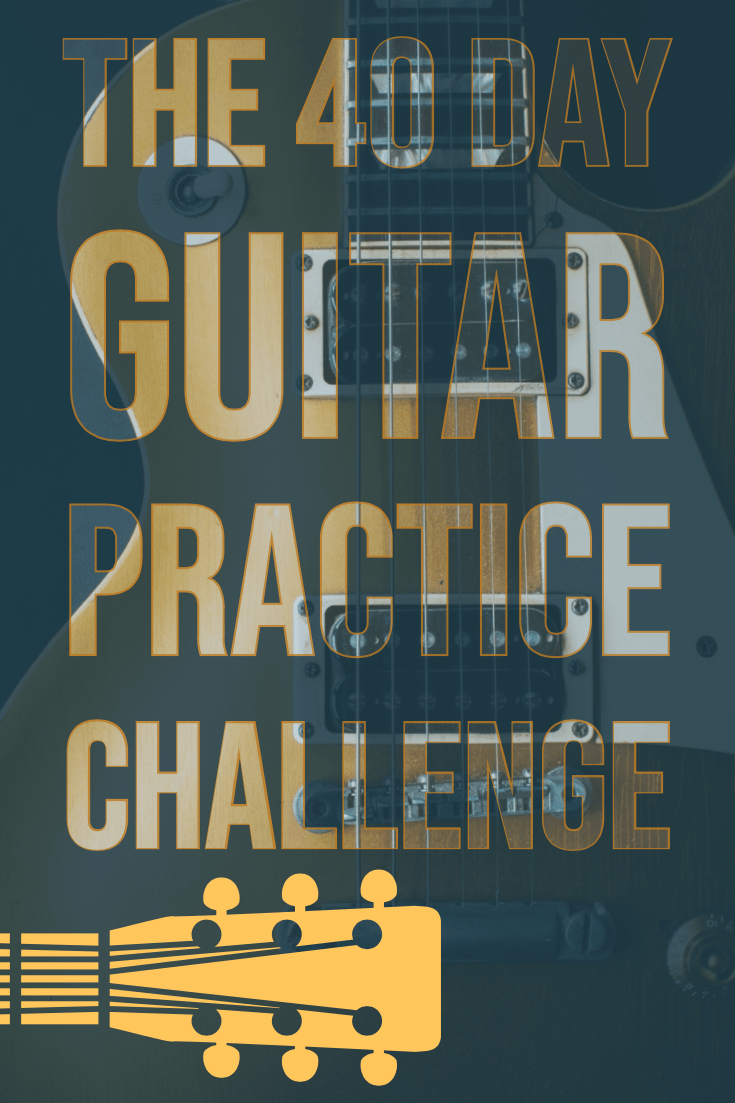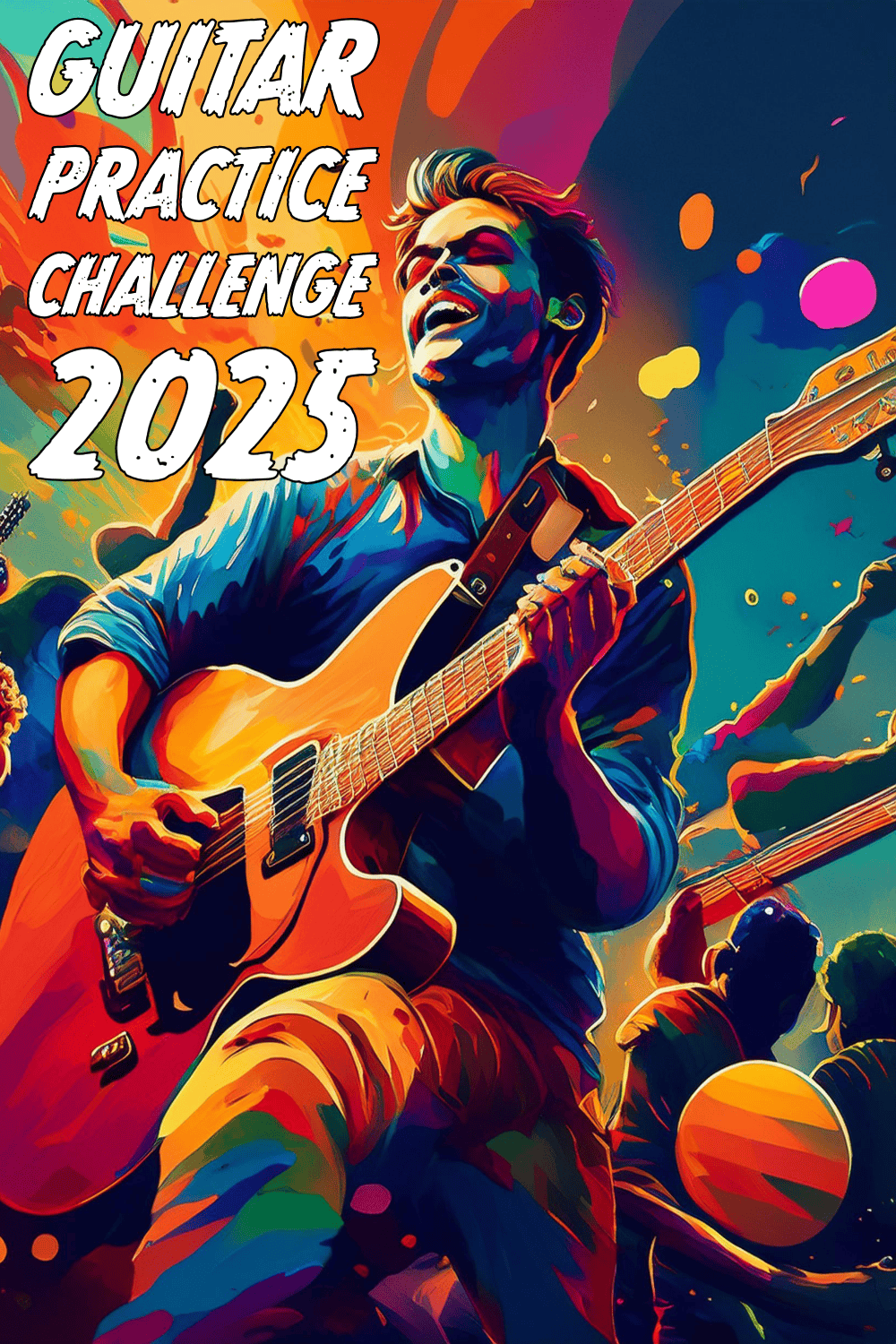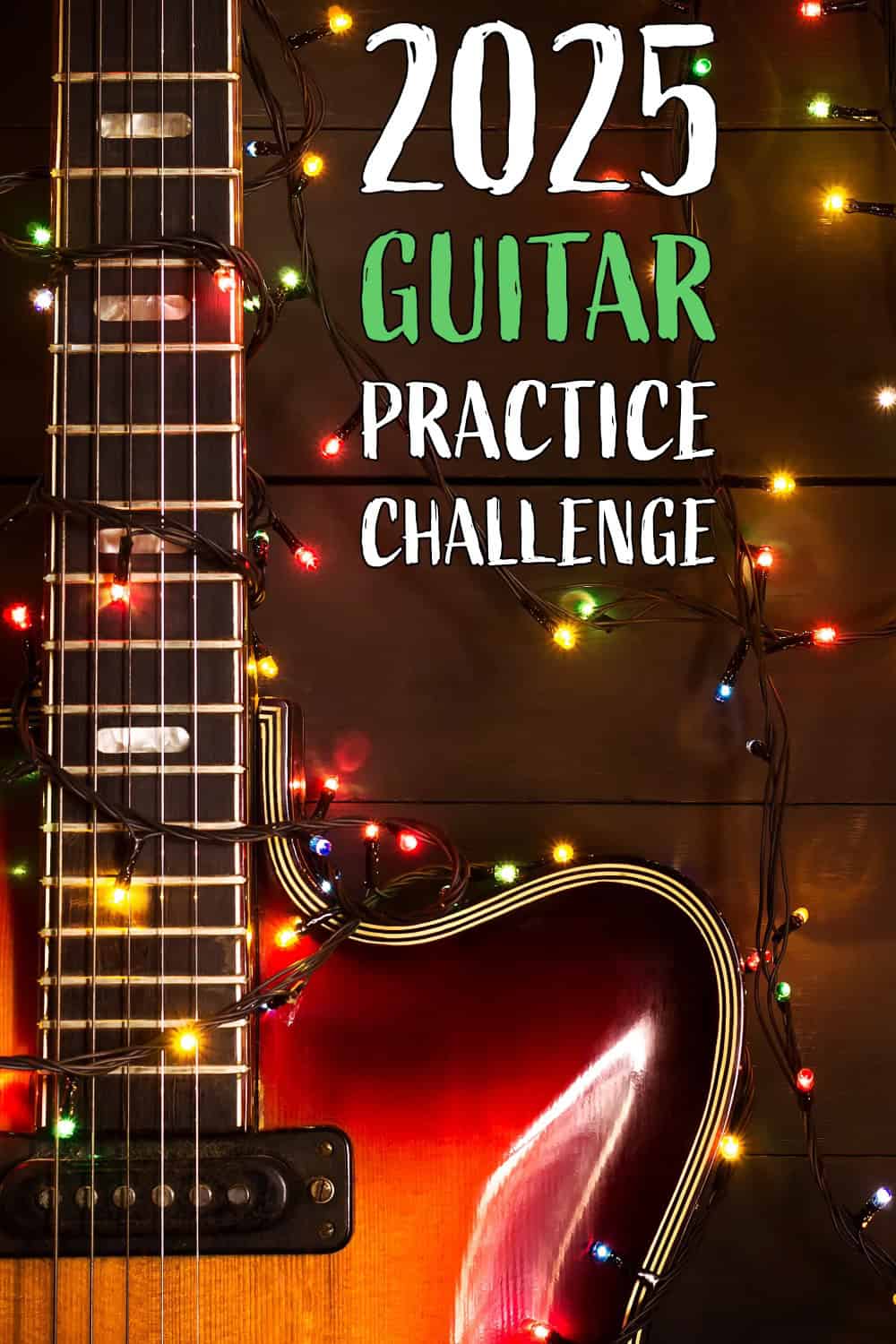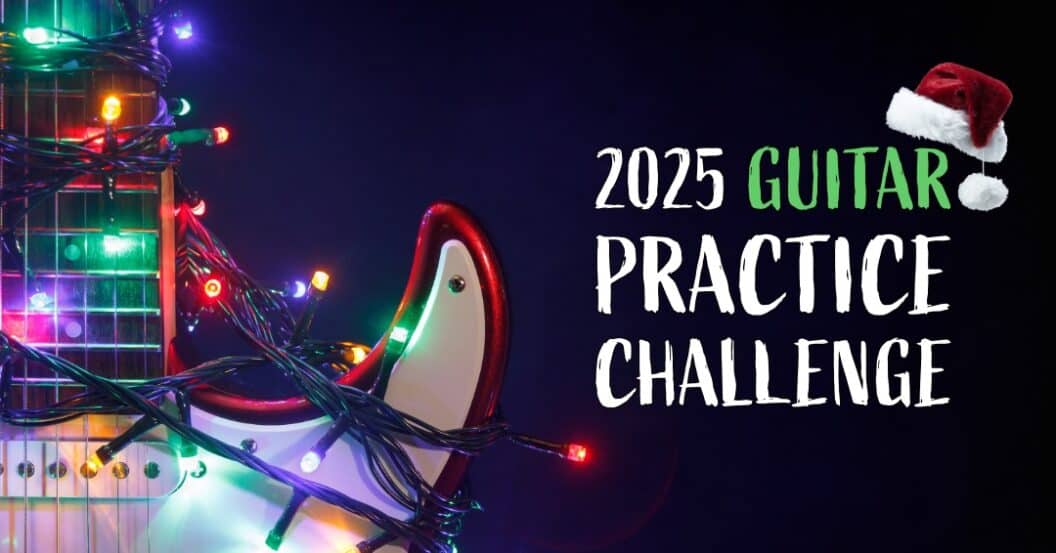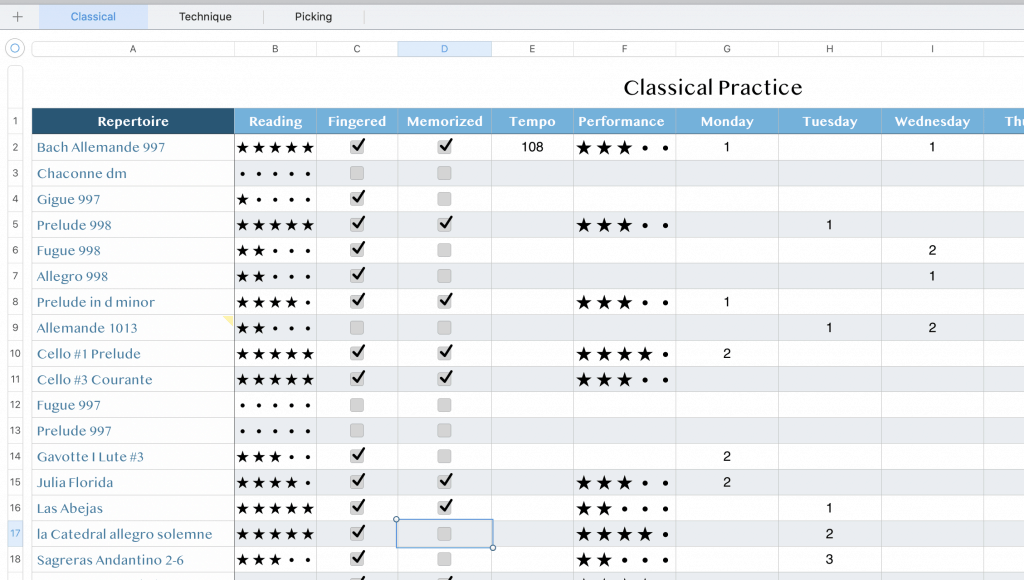Are you ready to take your guitar playing to the next level? Let’s do it together! A Guitar Practice Challenge. I’m working on a new Guitar Practice Challenge for 2025.
New Years resolutions can be cliche but what’s wrong with trying to better yourself, whether it’s a hobby, your health or the desire to become a better guitarist?
For beginning guitarists, improvement can be a measured by leaps and bounds almost daily. Intermediate and advanced guitarists can make those jumps in technique and musicality, but with a bit more effort.
A regular and organized guitar practice routine will ensure steady progress regardless of your skill level.
I got this idea from one of my favorite guitarists and internet friends, Flamenco and Classical Guitarist, Berto Boyd. Nobody knows how to make the best use of their practice time like Berto and I wanted to jump in and participate myself as well as write about it for my readers out there.
How does the Guitar Practice Challenge work?
My plan is to keep a running guitar practice journal which I’ll publish and update on this website every few days. I’ll also share practice tips from readers and other pro guitarists who decide to participate as well as some cool downloads of exercises and whatever else we can collectively come up with for our guitar community.
There are lots of easy ways to stay organized on your smart phone, computer or tablet. Here are a few ideas:
- Keep a running guitar practice calendar on Google calendar or Apple’s iCal.
- Create a guitar practice spreadsheet in Apple Numbers or Excel.
- Write a simple daily guitar Journal in Notes on your iPhone or a Word document.
- If you have a blog (like this one), create a daily or weekly post documenting your guitar practice routine.
Heres an example of a Classical Guitar Practice spreadsheet I created a while ago to keep track of my working repertoire and progress:
Guitar Practice Challenge Spreadsheet
If you want this Guitar Practice Spreadsheet that you can edit and use for yourself and save on your computer or tablet, you can download it here:
DownloadReady? Let’s get started!
Guitar Practice – Wednesday, January 1st – Day #1
I’ve had a strange schedule during the holiday weeks. I was off from performing Christmas Eve and Christmas Day then had 4 gigs in a row. New Year’s week I was off 3 days in a row and starting tomorrow have 4 gigs in a row again.
I’m not used to having so many consecutive days off and it does throw off my playing a bit. I wanted to start the Guitar Practice challenge today though, so I managed to squeeze in an hour… and it felt good!
My wife is off work this week and my Mother-in-law is coming over later for some corned beef and sour kraut to bring in 2020. I don’t know about you but it’s always harder for me to get some solid practice time when family is around.. but I was determined to get a little time in. I’d also like to squeeze another session in this evening if I can. We’ll see.
1st Guitar Practice Session
10:37 AM to 11:43 AM
Since I just came off a 4 day on, 3 day off gig streak, my picking feels a little wonky. I’m doing a trio gig tomorrow night and want my chops to be good, so I’m working on just scales, arpeggios and picking for an hour or so.
Guitar Practice Challenge Warm Up
To get the blood flowing and my picking hand moving, I started with some cross-picking (alternate picked) with mostly open strings up and down the neck in A minor. This is kind of my take on a typical Al DiMeola type sequence. I put the metronome on 105 BPM and played until I felt some fatigue in my right hand. About 10 minutes.
Heres an example of what I’m talking about:
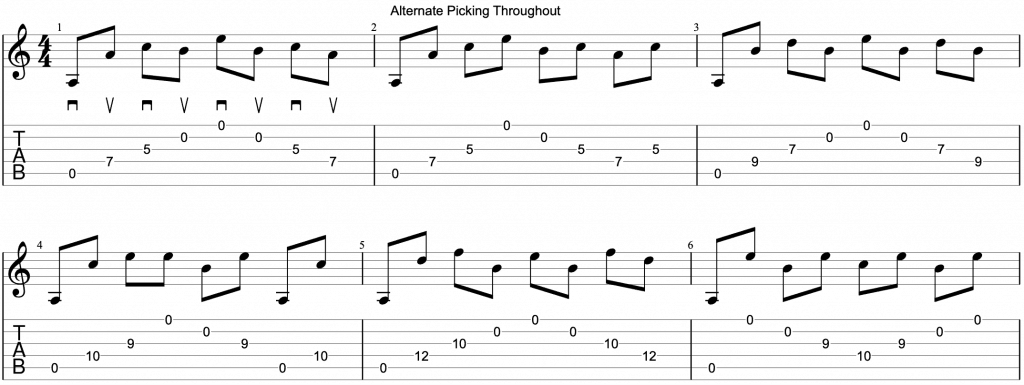
Modal Workout
Next up, since I’ll be doing a ton of improvising solos at tomorrows show, I want to focus on 3 note-per-string modes and scale sequences which is the bulk of what I do live. What I mean is, when I improvise solos I typically stick to diatonic scales and arpeggios, modes and otherwise.
My Modal Workout is an excellent way to get up and down the neck in any key. Today I kept it in A minor You can download the complete guitar mode workout here. Bumping the tempo up to 110 BPM on my acoustic, this takes about 40 minutes.
Lastly, I switched the metronome to a slower speed, 80 BPM and started working on some double-triplets within the modal scales like this:
Ex 2. Double Triplets (Key of G)
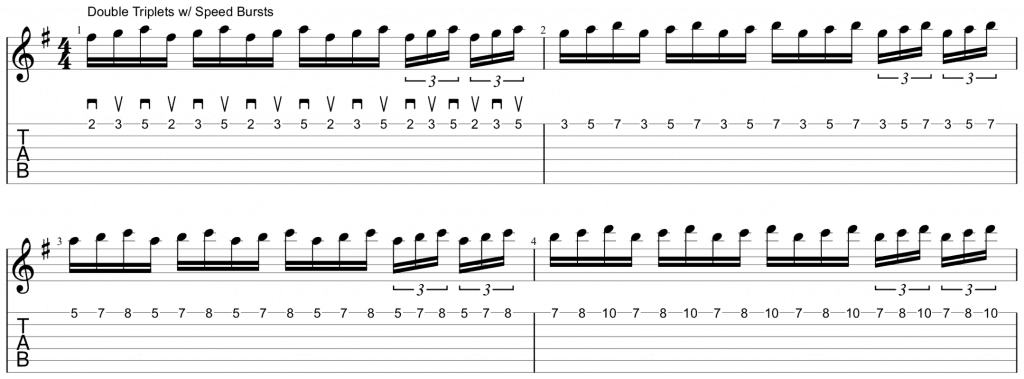
Guitar Practice Challenge – Thursday, January 2nd – Day #2
I have a gig with my acoustic trio tonight and I have a few songs to work on. I also want to squeeze in a bit of technical work so my chops are up to par. I try not to practice more than an hour or 2 on gig days so my hands aren’t fatigued later. My gigs are 4 hours usually, so too much practice can lead to a weak left hand halfway through the sets.
Guitar Warm Up – 1:28 PM to 2:04 PM
I did a simple 4 note-per-string chromatic warmup. This identical to the one outlined in my 7 Day Guitar Practice Routine book. I’m just running different left hand finger combinations up and down the neck using alternate picking.
I like to grab a finger combination starting on a different finger each day and run it up the neck. Here are all of the combos.
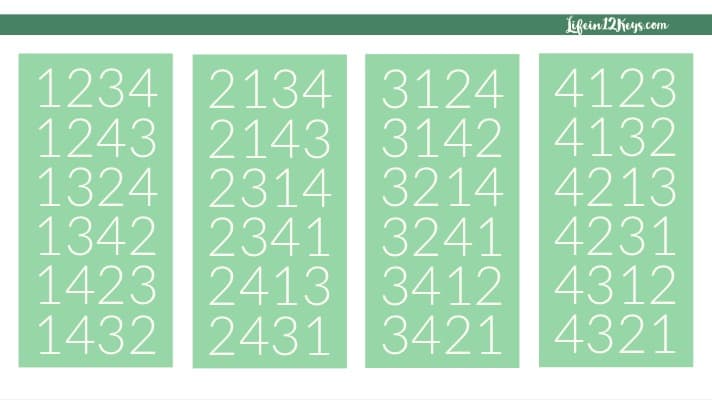
Guitar 4 Note Per String Fingerings
Classical Music as Guitar Exercises
I also mixed in a few Classical Guitar pieces using alternate picking. Since my gig tonight is a picking gig and not any finger-style guitar, it seems appropriate.
I ran through Villa Lobos Etude #1 (Chapter 2 in the practice routine book) and a Bach prelude I arranged from piano to the guitar as a picking exercise. Click the music below to download the full .PDF with all 3 variations:
You might be thinking, “why not just use a triad and work on the picking that way?” Sure, you could do that and get essentially the same results, but… I like to have a beginning and an end to my exercises and I love the way this little mini-prelude sounds using the different picking variations.
Learning New Guitar Material
2:15 PM – 3:30 PM
I learned 3 new songs to play tonight with the trio. When in a band.. do your homework! We never rehearse so it is integral to get the stuff learned at home. I like to pick up new material right before a gig so its fresh in my mind. Typically I end up memorizing it faster this way and after a live performance I might not need to go over it again.
Guitar Practice Challenge Friday
January 3rd – Day #3
This morning I transcribed that Bach Prelude excerpt above. I had been meaning to do it anyway, so there it is.
Practice time: 10:25 AM to 11:03
Writing, transcribing and otherwise creating music counts as practice too! Varying up your routine will keep it interesting and help your musical brain as well as your hands.
I have an early gig in Daytona today, so I only had time for a light technical routine.
Guitar Scales and some Improv
11:25 AM- 12:00PM
So that’s the first 3 days of the 40 Day Guitar Practice Challenge. In the coming days and as time permits, I’ll add new routines and hopefully some video and more music downloads. If you want to share your progress clips with the group or edit your practice sessions for social media, you can easily trim video online with free tools to highlight your best moments.
Jump on the email list below to get involved in the challenge and get updates as they are added.
Until next time, happy practicing,
Craig
Craig Smith is a professional Guitarist, Teacher, and Writer living in Sanford, Florida. Craig has taught guitar lessons, performed 200+ gigs per year for nearly 30 years, and published 4 guitar instructional books. When he’s not gigging or writing, you may find him by the pool with his wife Celeste, 4 Chihuahuas, and a drink. 🎸
